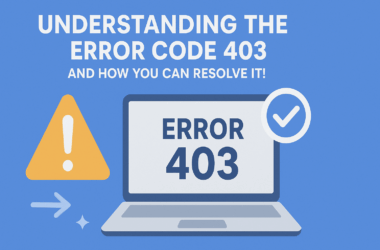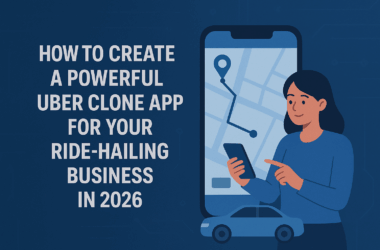Imagine it’s a sweltering summer evening in 2025, the kind where the air conditioner hums like a lifeline against the relentless heat. Sarah, a busy software engineer in Sacramento, glances at her phone as a grid alert pings: rolling blackouts are imminent. But instead of panic, she smiles. Her Tesla Powerwall 3, humming quietly in the garage, isn’t just safeguarding her home—it’s quietly dispatching stored solar energy to the grid, racking up credits on her utility bill. By morning, her app shows a $50 payout from the latest Virtual Power Plant event. What started as a smart investment in energy independence has blossomed into a steady stream of passive income, turning her rooftop solar setup into a mini power station that pays her back—literally. This isn’t science fiction; it’s the reality of how your Powerwall 3 can earn you passive income in 2025, blending cutting-edge tech with smart grid participation.
What Makes the Powerwall 3 a Game-Changer for Home Energy?
The Tesla Powerwall 3 isn’t just another battery—it’s a powerhouse of innovation designed for the energy demands of tomorrow. Launched with seamless integration for solar systems, this 13.5 kWh unit packs whole-home backup, rapid charging, and grid-responsive smarts into a sleek, stackable design. In 2025, with rising energy costs and frequent grid strains from climate extremes, the Powerwall 3 stands out by not only storing excess solar power but actively monetizing it. Homeowners like Sarah are discovering that beyond outage protection, this device opens doors to revenue streams through utility programs and incentives.
Key Features Driving Passive Income Potential
At its core, the Powerwall 3’s integrated inverter allows for 11.5 kW continuous power output, meaning it can handle high-demand appliances without flinching. But the real moneymaker? Its Storm Watch and Virtual Power Plant (VPP) capabilities. These features enable automatic grid support during peak events, earning you payments without lifting a finger. Paired with Tesla’s app, you get real-time insights into energy flow, event dispatches, and earnings—transparency that builds trust in this passive setup.
In regions like California, where solar adoption is booming, the Powerwall 3’s compatibility with net metering amplifies returns. Excess energy sold back to the grid during off-peak hours compounds with VPP bonuses, potentially offsetting your system’s $15,400 upfront cost (before incentives) in under a decade.
Unlocking Passive Income Through Virtual Power Plants
Virtual Power Plants represent the pinnacle of how your Powerwall 3 can earn you passive income in 2025. A VPP aggregates thousands of home batteries into a virtual “super plant,” dispatching power to stabilize the grid during high-demand periods. Think of it as Uber for energy: your Powerwall joins the fleet, gets called into action sporadically, and you get paid per dispatch—often $2 per kWh discharged.
Tesla’s VPP ecosystem has exploded in 2025, with over 100,000 enrolled Powerwalls contributing 535 MW in California alone during July’s heatwaves. This isn’t just altruistic; it’s lucrative. Programs reward participation with sign-up bonuses, performance payments, and capacity incentives, turning your idle battery into a revenue generator.
Top VPP Programs to Join in 2025
Enrollment varies by utility, but here’s a breakdown of standout options:
- PG&E and SCE’s Tesla VPP: Available to California residents, this program runs May through October, dispatching during 4-9 PM peaks. Earn up to $350 annually per Powerwall, plus event-based payouts averaging $400 for multi-hour dispatches. In 2025, expanded eligibility covers more rural areas, making it accessible for new installs.
- SMUD My Energy Optimizer: Sacramento Municipal Utility District offers a whopping $5,400 sign-up incentive for a single Powerwall 3, scaling to $10,000 for dual units. Ongoing earnings hit $440 per year per battery through automated grid support—ideal for solar-heavy households.
- GVEC Virtual Power Plant: In Texas, post-January 2025 installs snag a $2,530 bonus, with quarterly performance checks yielding $100-200 in credits. It’s tailored for ERCOT grid volatility, where blackouts are routine.
- ConnectedSolutions (Massachusetts and Beyond): This ISO-NE program links Powerwalls for winter peaks, paying $200-300 per event. With 2025 expansions to the Northeast, it’s a low-effort add-on for East Coast owners.
These programs require minimal setup—just app enrollment and utility approval—but deliver outsized returns. Always check local eligibility via the Tesla app, as incentives evolve with federal IRA tax credits (up to 30% off installation).
How Earnings Stack Up: Real 2025 Projections
Based on 2025 data, a single Powerwall 3 in a high-participation VPP could net $500-1,000 yearly. Factor in time-of-use arbitrage—charging cheap at night, discharging during pricey evenings—and totals climb to $1,500. For dual setups, double it. Unlike stocks or rentals, this income is ultra-passive: no tenants, no market swings, just reliable grid payments tied to renewable demand.
Maximizing Returns: Tips and Strategies for 2025
To supercharge your Powerwall 3’s earning potential, optimization is key. Start by pairing it with a robust solar array—aim for 10-15 kW to ensure full battery cycles. Tesla’s 2025 software updates enhance predictive dispatching, prioritizing high-reward events while reserving capacity for home use.
Step-by-Step Enrollment Guide
- Assess Compatibility: Confirm your utility offers VPP via Tesla’s support page.
- Install and Activate: Post-install, enable VPP in the app under “Energy Sharing.”
- Opt-In Securely: Review terms—most limit dispatches to 4-5 hours monthly, preserving 80% backup reserve.
- Monitor and Claim: Track via app dashboards; payments hit accounts quarterly.
Pro tip: Stack VPP with state rebates. California’s SGIP offers $850/kWh for low-income households, slashing payback to 5-7 years.
Beyond VPP: Complementary Income Streams
While VPPs are the star, don’t overlook hybrids:
- Demand Response Programs: Utilities like LADWP pay $100-200 for load-shifting.
- Carbon Credit Markets: Emerging 2025 platforms let you trade stored renewables for micro-credits.
- Peer-to-Peer Energy Sharing: In pilot zones, sell directly to neighbors via blockchain apps.
These layers could boost annual hauls by 20-30%, all while cutting your carbon footprint.
The Broader Impact: Sustainability Meets Profit
Owning a Powerwall 3 in 2025 isn’t solely about the dollars—it’s a vote for resilient, clean energy. By joining VPPs, you’re easing grid pressure, reducing fossil fuel reliance, and inspiring neighbors. Tesla reports VPPs averted 50,000 tons of CO2 emissions last year alone, proving passive income can drive planetary good.
Conclusion
How your Powerwall 3 can earn you passive income in 2025 boils down to smart tech meeting timely incentives. From Sarah’s blackout-proof evenings to your own app notifications of fresh credits, this investment pays dividends in security, savings, and sustainability. Ready to plug in? Consult Tesla today—your wallet (and the grid) will thank you.










